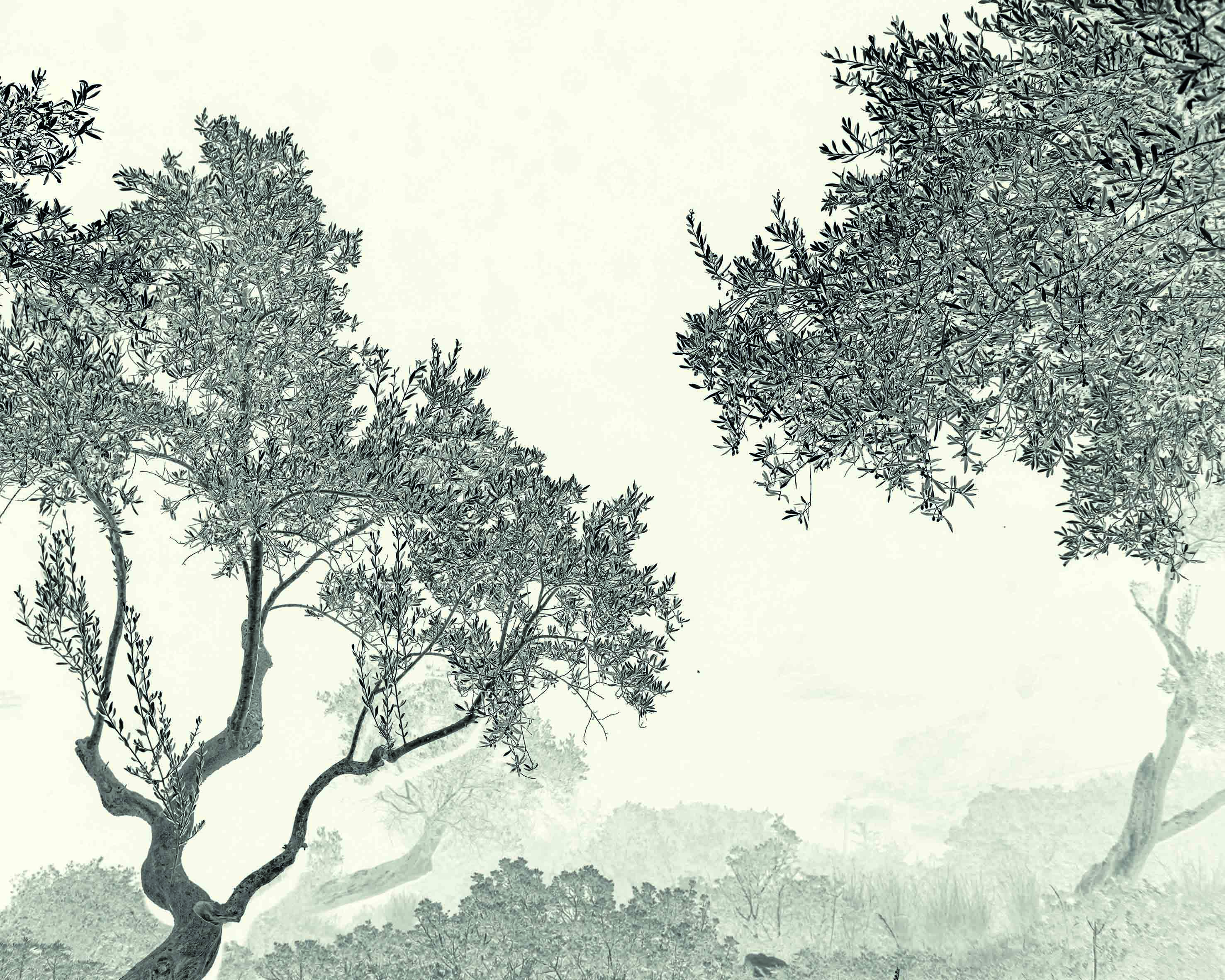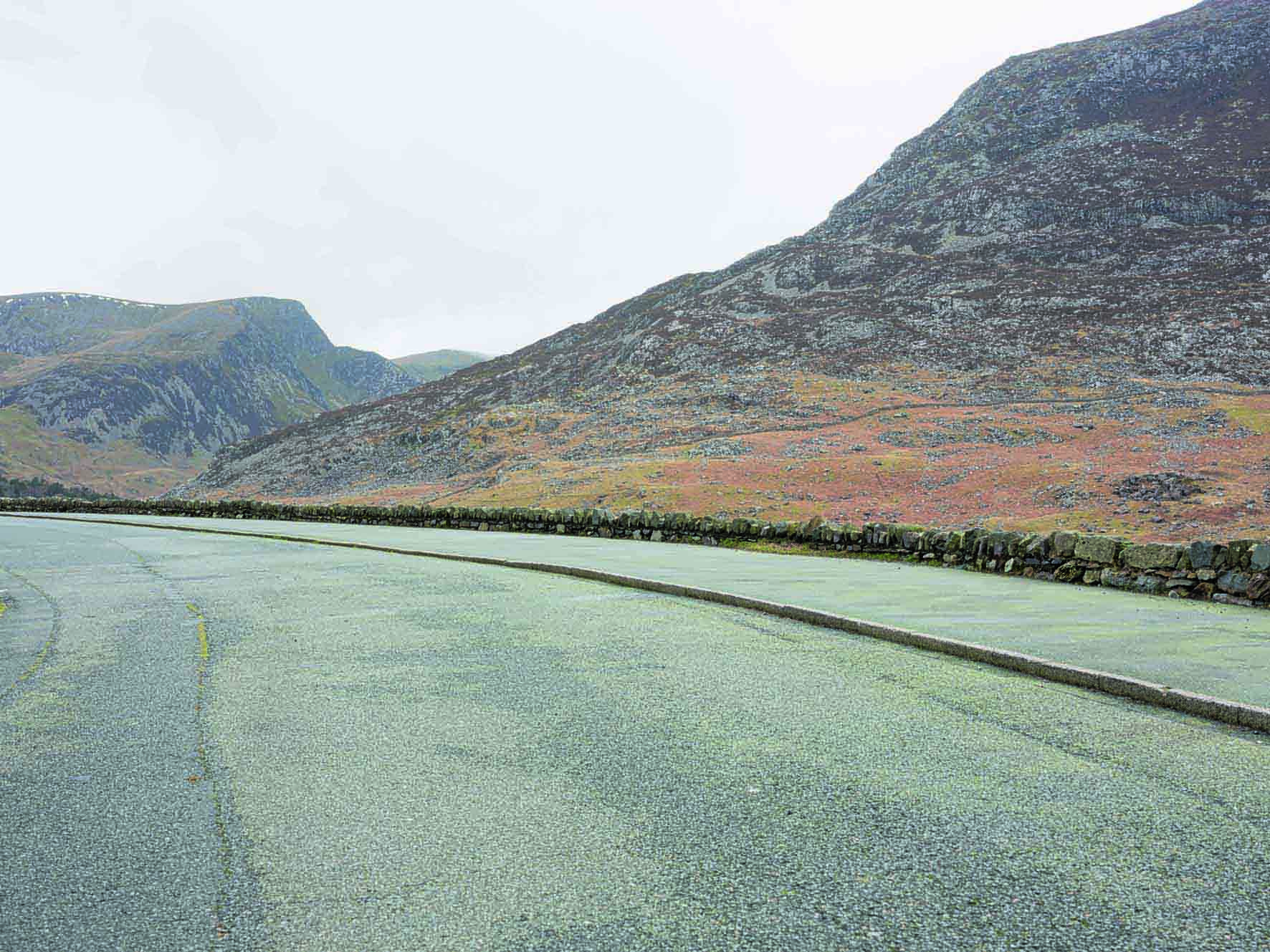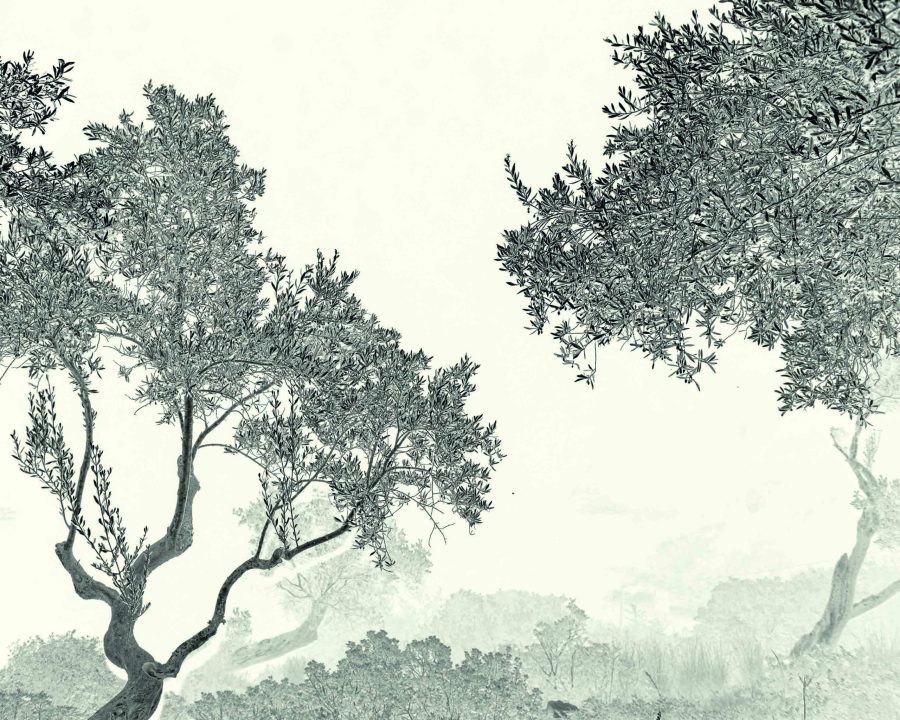It is undeniably invigorating to find oneself in a stunning ‘honeypot’ location at the magic hour. To witness the beauty can be a marvel to behold and a delight to capture. However, all too often photographs of such experiences and locations are sterile, formulaic, and if I’m brutally honest a little one-dimensional. I sense they don’t truly speak to the experience of being there. While they may gain superficial traction, kudos, and likes on social media et al, do they really capture the photographers’ connection or relationship with the location?

These splendid trees feel like dancers in a beautiful terpsichorean ballet, choreographed with a delicate grace worthy of the Greek gods as they reach out to each other in perfect harmony, Paxos, Greece Nikon D850, 24-70mm, 1/125sec at f/4, ISO 64
I’m making sweeping generalisations, of course, but I have seen an awful lot of landscape images over the years and by far the most successful photographs in my view are those where it’s clear there has been some engagement with a location, through mindful, considered contemplation. By adding layers of depth, meaning, and substance that speaks in a genuine way of the sense of place the photographer was ‘feeling’, rather than merely capturing the same ‘chocolate box’ picture that everyone else has taken.

Intentional Camera Movement (ICM) can be used as a creative way to express your emotions. This was made in dark times Fujifilm GFX 50R, 63mm, 1/18sec at f/32, ISO 100
Looking for inspiration
To explore this notion a little further with the hope of finding some useful take-away practical skills, I’m going to turn in the first instance to the New Topographics, and in particular to the wise words of photographer Robert Adams for inspiration. Adams (no relation to Ansel) was one of the New Topographics along with other photographers such as Lewis Baltz and Steve Shore. The group originated in the mid-1970s and was generally concerned with the human relationship with the land.
They turned their back on the type of imagery that celebrated natural beauty, which was often associated with ‘traditional’ landscape photography. Their images, which more often than not revealed a deadpan and banal aesthetic, acted as a critique of humanity’s relationship with the environment. Most of their attention was turned on the manmade landscape depicting scenes of urban development primarily in the USA.
While this feature is not aimed at urban landscapes in particular there are valuable lessons to be learned from their approach and in particular the thoughts of Robert Adams. I’m keen to learn from these ideas and use them as a creative springboard to a deeper and more meaningful engagement with the land and the way that we photograph it. In his seminal book Beauty in Photography: Essays in Defense of Traditional Values (published in 1981), Adams makes some fascinating insights into landscape photography that I feel everyone would do well to ponder on, whatever your interest in the landscape is.

At ‘The Devil’s Kitchen’ in North Wales a heavy sky merges with the land to reinforce a mysterious sense of place. Fujifilm GFX 50R, 45mm, 1/600sec at f/6.4, ISO 800
Adams says, ‘Landscape pictures can offer us, I think, three varieties – geography, autobiography, and metaphor. Geography is, if taken alone, sometimes boring, autobiography is frequently trivial, and metaphor can be dubious. But taken together … the three kinds of information strengthen each other and reinforce what we all work to keep intact – an affection for life.’
By ‘geography’ Adams is referring to a visual record of a place, simply the topography, weather and the light, and so on in a descriptive way. By ‘autobiography’, he’s asking you as the photographer to think about how you feel about the place and why you have chosen to photograph this aspect of it. And, finally, by metaphor, he’s asking what else can you say with your photograph – can it be used to imply an alternative meaning or message? Engagment Another wise thinker in the world of photographic ‘thinking’ is the French philosopher and writer, Roland Barthes, whose seminal book Camera Lucida is required reading on most photography courses.
Studium and Punctum
I won’t dwell on his musings in the context of this feature too much, but I think it’s worth mentioning his work and his ideas around ‘studium’ and ‘punctum’. He considered that these two elements speak to the viewer’s level of engagement with an image and the layers of meaning they might imply. Put very simply, studium could be seen as the literal interpretation of an image – in this context, we could make a comparison to Adams’s idea of ‘geography’ in landscape photography. The superficial rendering of a vista could be seen as the ‘studium’ while the punctum makes a connection with the viewer in a deeper more visceral way. Perhaps, Adams’s references to autobiography and metaphor could be seen as ways to forge that deeper resonance with the viewer that makes a connection on an emotional level that speaks to Barthes’s idea on punctum. Both writers are worthy of further reading and their work is very accessible. However, maybe this is all starting to sound a bit too arty-farty, so let’s see how we can put it into practice…
First off, don’t panic, it doesn’t need to be all highfalutin’ stuff that requires intellectual scaffolding and a masters in the philosophy of art and language. All it really requires you to do is think about what you’re photographing and why, and then how you go about communicating that using the language of photography. Connect with the landscape When you reach a location with a view to making a landscape photograph, try to dislocate yourself from the constraints of other images you may associate with the spot. Take the time to meditate, close your eyes, and use your other senses – smell, hearing, and even touch – to build a mental picture. Ask yourself how the place really resonates with you; try thinking of words to describe it, and then how you might translate that into a photograph.
It might be that a small detail takes on a more significant meaning – it might be the intensity of the wind that you want to capture or the wetness of the drizzle, or a serene calmness. Try to avoid using a technique for technique’s sake. If your visceral response to a location calls for a long, slow exposure then reach for your ND filters, but don’t use them just for the sake of it. Above all try to be honest in your feelings about the ‘place’ and endeavour to make your sensory relationship or ideological concerns with it evident in the photograph. Ultimately a landscape photograph can be just a beautiful picture but it can also be a means of communicating deeper feelings, emotions or ideas.
Why it works
This photograph below was taken on the outskirts of the city I live in; it’s a decidedly unglamorous underpass that I run under most days. During my runs, I have seen the location in all weather and at all times of the day. I had a clear idea of the kind of image I wanted to make. The concrete ‘sky’ and dominant mass of pillar provides a stark contrast to the delicate form of the foliage. The fragility of the plants is amplified by the gentle movement caused by the wind that has been captured with a slight motion blur through the use of a long(ish) exposure. The foliage is also in shade and appears (to me at least) to be reaching for the hopeful light streaming in from the background. Our relationship with nature is a theme that underpins much of my work and in many ways this photograph speaks to those concerns and just perhaps ticks Adams’s boxes of geography, autobiography and metaphor.

Fujifilm GFX 50R, 45mm, 1 sec at f/18, ISO 100
Ten simple steps for more creative landscapes
1) To start with (and especially in these COVID times) choose a location close to your home; there is no need to head to ‘epic’ honeypot locations to make interesting images.
2) Ideally, visit the location several times without your camera in different conditions and different times of the day to get a sense of the place.
3) Use your other senses, such as smell, hearing, and touch. Take notes using words to describe the place and how it makes you feel.
4) Think about the location when you’re not there, and again make observations about what you remember.
5) Return with your camera and meditate on how you’re going to translate your thoughts into a meaningful image.

I like the contrast of the wild, rugged landscape of North Wales alongside the hard road surface Fujifilm GFX 50R, 45mm, 0.5 sec at f/11, ISO 100
6) Decide what you’re going to leave in and out of the frame. Angle of view, choice of lens and so on will all influence the way your image is ‘read’ when you’re finished.
7) Use a technique that suits your intention. Let your intent dictate the technique and not the other way around.
8) Finally – take the image. Take several images and explore different angles and points of view to best express yourself.
9) Process your images appropriately to also reflect the way that you felt when you captured the image.
10) Share your images – look for feedback and see how other people react to them, ask for feedback and see how well your ideas and thoughts have been communicated.

Colour, tone and composition can all be used to evoke emotions. Fujifilm GFX 50R, 63mm, 1/125sec at f/5.6, ISO 100
Further reading
Camera LucidaRoland Barthes
The French thinker’s seminal book is a standard issue for students of photography. It is however accessible to all, thought-provoking and offers valuable lessons in ‘reading’ photographs.
Beauty in Photography: Essays in Defense of Traditional Values
Robert Adams (published in 1981)
Thoughtful and accessible insight into the art of photography. I’ve had a copy of this book for the past 30 years and always seem to learn something new when I dip into it – which I do frequently.
Approaching Photography
Paul Hill
Now in its third edition, Hill’s brilliant book has been updated to reflect some aspects of digital photography but at its core, it remains an insightful guiding beacon for photographers.
On Being a Photographer
Bill Jay and David Hurn
Not specifically relevant to the notion of adding layers of meaning to your landscape photography, but an invaluable and delightful read that every photographer should read. It’ll keep you level headed







